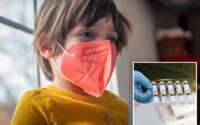Alcohol-induced liver disease spiked during COVID-19 pandemic
It looks like all that day drinking caught up to us.
Medical researchers have found that a jump in alcohol-related liver disease is directly linked to the COVID-19 pandemic years.
There were an increasing number of cases of alcohol-related liver illness from 2016 through 2020, the researchers from Washington State University noted.
But the increase was especially sharp in 2020 — the year COVID-19 arrived in the US — when a 12.4% spike over 2019 cases was discovered.
“Severe liver disease seems to be rising over time, but it appears to have increased even more dramatically during the pandemic,” Dr. Kris Kowdley, a professor at Washington State University’s College of Medicine, said in a news release.
“We confirmed that alcohol-related hepatitis hospital admissions increased continually from 2016 to 2020,” added Kowdley, who is also the director of the Liver Institute Northwest.
“We also found that younger patients and women had a higher increase in in-hospital mortality compared to their counterparts.”
Roughly one-third of heavy drinkers — defined as people who consume more than four alcoholic beverages in a day — are diagnosed with alcohol-related hepatitis.

The symptoms can include jaundice (yellowing of the skin and eyes), loss of appetite, nausea, vomiting, fever, fatigue and weakness, according to the Mayo Clinic.
If not treated early, the disease can lead to permanent liver damage, known as cirrhosis, and eventually death.
Though alcohol-related hepatitis is more common in men overall, women saw a greater increase in the number of cases, with a 14.6% rise between 2019-2020 compared to men at 12.2%.
Indeed, a 2021 study found that mothers with young kids increased their booze consumption by nearly 325% between the start of the COVID-19 pandemic and the end of 2020.
Most cases were seen in the South, according to the study, published in the American Journal of the Medical Sciences, but the greatest jump in the number of cases was in the West.
“It’s likely that a variety of factors contributed to a much higher rate of alcohol consumption during the pandemic, such as being socially isolated and having fewer barriers to drinking excess alcohol,” said Kowdley.
Alcohol wasn’t the only vice that saw a jump in users during the pandemic: A 2021 survey found that in 2020, the time spent on exercise decreased by more than 31%, screen time increased by more than 60% and smoking increased by 9%.


